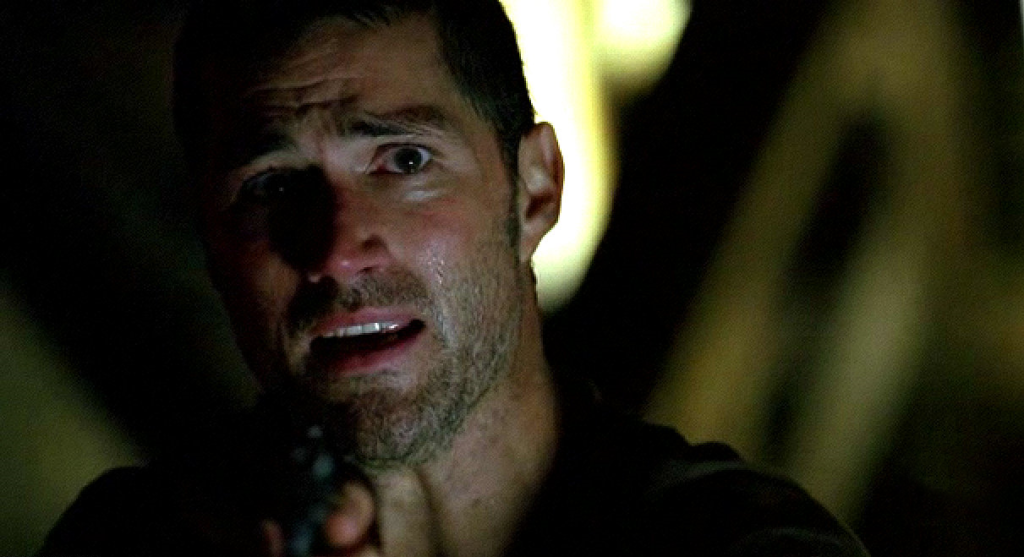Screenwriter's Compass Character as True North
Character development is one of the toughest tasks a screenwriter is faced with when sitting down to write. However, ScreenCraft recently held a virtual panel that featured some of TV and film's biggest heavy hitters and they shared some expert-level advice on how to create dimensional, intriguing, and inspiring characters. The panel included TV writer/producer Javier Grillo-Marxuach ( Lost, The Dark Crystal, Cowboy Bebop ), screenwriter Peter Chiarelli ( Crazy Rich Asians, Now You See Me 2, The Proposal ), and screenwriters/producers Rick Jaffa and Amanda Silver ( Rise of the Planet of the Apes, Jurassic World, Mulan, Avatar 2 and3 ). Hosted by ScreenCraft's own Emily Dell ( How I Met Your Murderer ), this lively discussion touched an everything, including conflict, character, and going the extra mile as a screenwriter. Here are five highlights from the event. But Grillo-Marxuach went a little bit deeper. His advice is to create an "irreconcilable contradiction" inside the heart of the character. Coming from the TV world, Grillo-Marxuach used Don Draper from TV's Mad Men as an example. "Don Draper is a character trying to live up to an ideal that doesn't exist, but he's a very different person than that ideal and his soul is always trying to sabotage him… Ultimately, he doesn't resolve it, he stays the same guy." Sometimes, that "irreconcilable contradiction" in a character can play out as the spine, or theme for the entire show, movie, or even film franchise. Don Draper in 'Mad Men' Why do we remember some characters for years while others are forgettable? There's no perfect equation to creating memorable characters, but putting some serious thought into their wants, flaws, and backstory can get you closer. Chiarelli summed up creating memorable characters like this: Have a smart person face what seems like an impossible challenge. "Watching them get through it and solve it at the same time – and then, the old character arc thing, they learn a little something about themselves. It's as simple as that." Amanda Silver said this was certainly the case for Planet of the Apes . She cited the central contradiction within the protagonist, Caesar. "It's kind of an umbrella for the wholePlanet of the Apes franchise, this Pinocchio thing where you've got this little boy ape who wants to be a real boy. That's what endeared us to Caesar when he was first born. But of course, he's got to grow over time to embrace his real tribe from there, but you can see it in subsequent sequels – this idea of this central conflict within him. He was raised by humans, he has this thing for humans yet he's an ape. He's the leader of the apes. There's so much great fuel in that." Caesar's "irreconcilable contradiction" is that he wants to be something other than who he is. This is a problem many of us struggle with in real life thereby making this ape surprisingly relatable. A good writer would give Caesar the arc of finally accepting his true self. But Silver and Rick Jaffa are great writers and went a step further. Jaffa said the pitch for Planet of the Apes was simple: "From Pinocchio to Moses." Yes, Moses from the bible. Over the course of the franchise, Caesar would go from "wanting to be a real boy" like Pinocchio to accepting his true self to becoming the leader of the apes and avenging his kind. This is some epic storytelling that all started with a simple "irreconcilable contradiction" inside one character. Caesar in 'Dawn of the Planet of the Apes' As you write a character and create their "irreconcilable contradiction," it's easy to put it into action – at first. As you get into the weeds of act II (in a film script) there's plot, other characters, and set pieces (particularly in a comedy or action film), all of which can distract from the protagonist's true objective and flaw. But having written the screenplay for Crazy Rich Asians , which has numerous characters and locations, Chiarelli summarized exactly what the story is about. "The governing principle of the whole thing is, can Rachel win over Eleanor (the mom) just a little bit? That's the through-line that everything else orbits around. All the flash and whatever, it's all going toward that problem. Ultimately the person who changes in the movie is Eleanor, not Rachel as much. That was my true north. You need that true north character line, or you get lost." Chiarelli said that his guide for choosing which characters from the book ( Crazy Rich Asians by Kevin Kwan) to include in the movie, was Rachel's "true north" principal. If a character could help Rachel win over Eleanor in a significant way, they made the cut. If they didn't – no matter how likable or funny they were – they didn't make it into the screenplay. Once you discover your protagonist's "true north," the writers suggested writing it down and keeping it near your computer to use as a compass for the times you get off course. Do you know how to write a character that inspires?
Secrets to Creating Memorable Characters
"Irreconcilable Contradiction"

Smart Person + Impossible Challenge
Case Study: Caesar from Planet of the Apes

Finding a Character's 'True North'
Crash-Test Your Characters
We've all heard the phrase, "Torture your protagonist," but many beginning writers struggle to do this consistently. Grillo-Marxuach said to give yourself this directive:
"You must first put your characters in the one, singular situation that most challenges their true self."
He went on to say he once had a playwriting teacher who summed up writing conflict this way:
"A dramatist is like an insane train conductor who's trying to get all the trains to collide with each other."
This makes sense considering every train crash-tests your protagonist, pushes them to dig deep, and makes for great drama. Start small and build up to an epic crash in your screenplay. By the end, if your protagonist survives, you will know exactly who they are.

Jack from 'Lost'
It's Good to Get Personal with a Character
Should characters be purely fictional, or should the writer bring their own self to the character? Silver said that she and Jaffa bring their own wants, needs, and issues.
"For us, it's always personal. That's the shocking thing I discovered when I started writing. The audience might not recognize it is personal or think that Rick and I would have anything in common with Caesar, but we kind of gave him our heart and soul."
She said that your characters don't need to be autobiographical, but a writer should look for ways to put parts of themself into a character.
"Be vulnerable, even when you're trying to be funny. For me, the barometer is when we hand a script in, I can't bear that someone's going to read it. That's how personal it is. I want to hide under my bed all weekend."
Antagonists Need Love Too
Writers often get so preoccupied with their hero that they often neglect their antagonist or villain. This could be in part because writers don't like to think they have much in common with someone who's evil, or at the very least, bad. Chiarelli had an excellent suggestion for overcoming this obstacle.
"I want to believe my villain thinks they are right the whole time. I've never written a sociopath, but you write versions of it, the idea that they have a firm footing, and they are absolutely dedicated to what they are doing makes complete sense. That's good writing versus bad writing."
Jaffa agreed, adding:
"[The villain] is a direct reflection of the protagonist – the journey, the need."
One way to think about your antagonist is that they are the shadow version of your protagonist. They are two similar souls, but one character goes to the light, while the other goes to the darkness. Remember that the function of your antagonist is to force your protagonist to change. It's always a painful process that's never pretty, but it is necessary for your story.

Eleanor, Nick, and Rachel in 'Crazy Rich Asians'
So, as you begin to work on your characters, keep these great tips in mind. Make them memorable, give them an irreconcilable contradiction, put your heart and soul into them, and then put them through the gauntlet.
And don't forget about your villains!
Shanee Edwards is a screenwriter, journalist and author. After receiving her MFA in Screenwriting from UCLA, she was hired to adapt various stories for the screen including Apes or Angels, the true story of naturalist Charles Darwin, and Three Wishes, based on the New York Times best selfing novel by Kristen Ashley. You can listen to her interview Oscar-winning screenwriters on The Script Lab Podcast, or read her book Ada Lovelace: the Countess who Dreamed in Numbers. Follow her on Twitter: @ShaneeEdwards
Screenwriter's Compass Character as True North
Source: https://screencraft.org/2021/06/25/5-lessons-from-writing-characters-that-inspire/